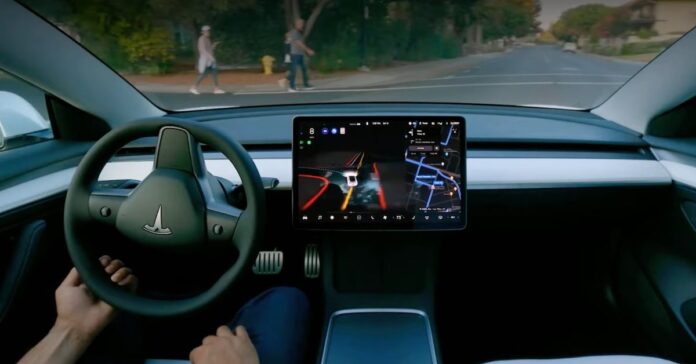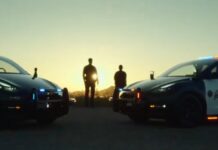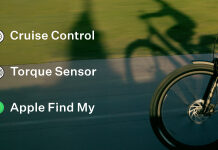[ad_1]
Tesla has started to release a new Full Self-Driving Beta software update (10.7) that improves the situation with “phantom braking” and even helps the FSD beta be more energy efficient.
For more than a year now, Tesla has been slowly rolling out what it is calling “Full Self-Driving Beta” (FSD Beta), which is an early version of its self-driving software that is currently being tested by a fleet of Tesla owners selected by the company and through its “safety test score.“
The software enables the vehicle to drive autonomously to a destination entered in the car’s navigation system, but the driver needs to remain vigilant and ready to take control at all times.
Since the responsibility lies with the driver and not Tesla’s system, it is still considered a level 2 driver-assist system despite its name. It has been sort of a “two steps forward, one step back” type of program, as some updates have seen regressions in terms of the driving capabilities.
In recent updates, the automaker has been releasing more details about the changes to the driving behaviors in the release notes.
We previously reported on the FSD 10.6 update with the release notes that came out on December 4.
Now a few weeks later, Tesla is starting to release Full Self-Driving Beta 10.7 and here are the release notes (via Reddit):
- Improved object attributes network to reduce false cut-in slowdowns by 50% and lane assignment error by 19%.
- Improved photon-to-control vehicle response latency by 20% on average.
- Expanded use of regenerative braking in Autopilot down to O mph for smoother stops and improved energy efficiency.
- Improved VRU (pedestrians, bicyclists, motorcycles, animals) lateral velocity error by 4.9% by adding more auto-labeled and simulated training examples to the dataset.
- Reduced false slowdowns for crossing objects by improved velocity estimates for objects at the end of visibility.
- Reduced false slowdowns by adding geometric checks to cross-validate lane assignment of objects.
- Improved speed profile for unprotected left turns when visibility is low.
- Added more natural behavior to bias over bike lanes during right turns.
- Improved comfort when yielding to jaywalkers by better modelling of stopping region with soft and hard deadlines.
- Improved smoothness for merge control with better modelling of merge point and ghost objects positioned at the edge of visibility.
- Improved overall comfort by enforcing stricter lateral jerk bounds in trajectory optimizer
- Improved short deadline lane changes through richer trajectory modeling.
- Improved integration between lead vehicle overtake and lane change gap selection.
- Updated trajectory line visualization.
The update includes several points of improvements focused on “false slowdowns”, which are commonly known as “phantom braking” events where the system slows down or brakes for no good reason.
Tesla also says that it improved the autonomous use of regenerative braking for smoother and more energy-efficient driving.
Interestingly, the automaker specifically mentioned that this improvement is for “Autopilot” and not just FSD Beta despite this being an FSD Beta update.
But some changes that Tesla implements in FSD Beta appear to make it to the broader Autopilot and as we previously reported, Autopilot users outside of FSD Beta have been reporting increasing issues with phantom braking lately.
As usual, drivers should always be careful when using Autopilot or FSD Beta, keep their hands on the wheel at all times, and be ready to take control.
The update has now started to be pushed to the Beta fleet and it’s not clear if Tesla is expanding access to more people or just those with a 98 or above ‘safety score‘.
According to CEO Elon Musk on Twitter this weekend, the automaker might wait for 10.8, which is apparently going to be released as soon as Tuesday, along with a bigger ‘holiday update’ for the rest of the fleet.
FTC: We use income earning auto affiliate links. More.
Subscribe to Electrek on YouTube for exclusive videos and subscribe to the podcast.
[ad_2]
Source link















